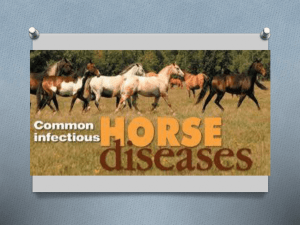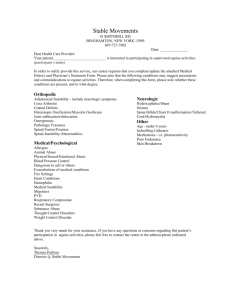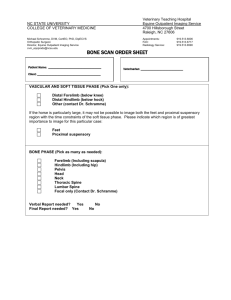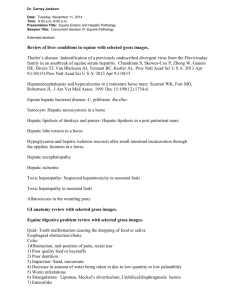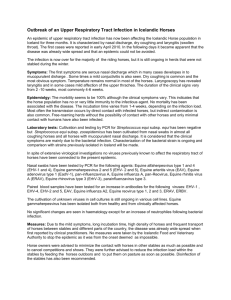Equine Piroplasmosis
advertisement
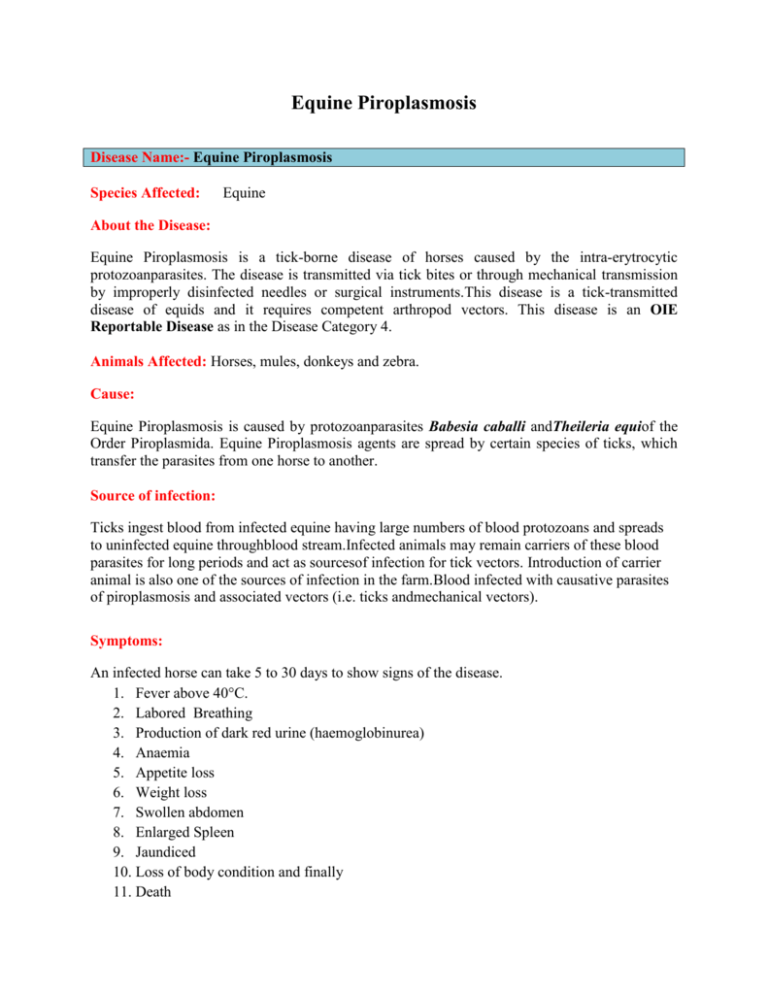
Equine Piroplasmosis Disease Name:- Equine Piroplasmosis Species Affected: Equine About the Disease: Equine Piroplasmosis is a tick-borne disease of horses caused by the intra-erytrocytic protozoanparasites. The disease is transmitted via tick bites or through mechanical transmission by improperly disinfected needles or surgical instruments.This disease is a tick-transmitted disease of equids and it requires competent arthropod vectors. This disease is an OIE Reportable Disease as in the Disease Category 4. Animals Affected: Horses, mules, donkeys and zebra. Cause: Equine Piroplasmosis is caused by protozoanparasites Babesia caballi andTheileria equiof the Order Piroplasmida. Equine Piroplasmosis agents are spread by certain species of ticks, which transfer the parasites from one horse to another. Source of infection: Ticks ingest blood from infected equine having large numbers of blood protozoans and spreads to uninfected equine throughblood stream.Infected animals may remain carriers of these blood parasites for long periods and act as sourcesof infection for tick vectors. Introduction of carrier animal is also one of the sources of infection in the farm.Blood infected with causative parasites of piroplasmosis and associated vectors (i.e. ticks andmechanical vectors). Symptoms: An infected horse can take 5 to 30 days to show signs of the disease. 1. Fever above 40°C. 2. Labored Breathing 3. Production of dark red urine (haemoglobinurea) 4. Anaemia 5. Appetite loss 6. Weight loss 7. Swollen abdomen 8. Enlarged Spleen 9. Jaundiced 10. Loss of body condition and finally 11. Death Control and Management: Equine Piroplasmosiscan be controlled in the following ways: 1) Reducing exposure of equids to ticks. 2) Control and eradication of the tick vector by using repellant, acaricides and regular inspection of the farm premises. 3) Preventingthe transfer of blood between animals. 4) Protection from biting of ticks. 5) Proper sterilization of surgical instrumentsforsurgical intervention cases. 6) Animals should be quarantined from surrounding horses and vectors. 7) Antiprotozoal agents should be used as and when indicated. 8) Proper cleaning and disinfection of equine dental, tattoo and surgical equipment. Vaccines: Currently, there is no vaccine available for Equine Piroplasmosis. However, in some countries live attenuated vaccine of some Equine Piroplasmosis have been successfully practiced. Meteorological Occurrence: Warm and humid climatic condition favors the breeding of ticks that increases tick population and there will be more chances of spread of the disease. Prepared by: Dr. Peter N JRF, NADRS, Manipur. Disease Investigatory Laboratory Directorate of Veterinary, & A.H. Services, Manipur


